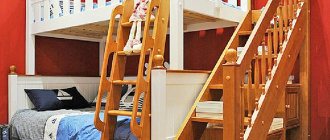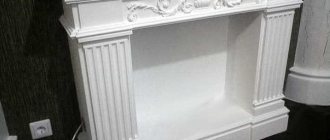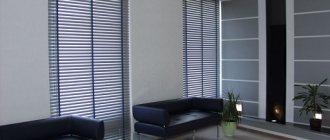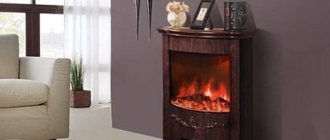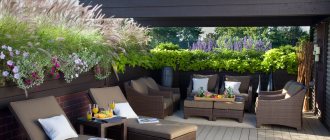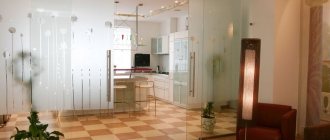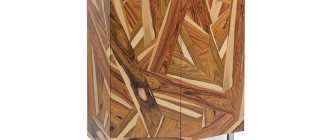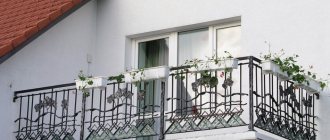Design features and what is a door panel
Initially, you need to understand what formed the basis for the name. Panel means an insert in the door leaf that is thinner than the frame itself. It can often be found on interior door panels. That is, in essence, it is the thinnest plywood sheet, planks or other finishing material that is placed inside the door.
This technique makes it possible to make original shapes and transform a standard design into an unusual one, with an exclusive design and decor. The panel decorates the door leaf, placing emphasis on the door itself or on its individual elements. Thanks to this technique, you can adjust the door leaf to the chosen style in the room.
Paneled doors can be installed both in an interior doorway and as an entrance door
It may contain:
- Volumetric elements;
- Graphic drawings;
- Unusual patterns, etc.
It all depends on the preferences of the home owners and the imagination of the manufacturer. The scope of use of such solid wood products is unlimited. Similar models can be seen not only in apartments and cottages, but also in office buildings, public places, and various types of establishments.
Depending on the functionality and materials used, paneled interior wooden products can be used to design an opening, both between rooms and at the entrance to the room.
At the same time, for interior use, you should take products with a panel made of lighter and more unusual materials, for example, a plywood sheet or a thin MDF sheet is suitable. But for doors at the entrance it is more correct to choose metal or hard, durable wood.
Materials used
Paneled doors can be made from various materials. Their appearance, characteristics, safety margin and, of course, cost largely depend on this.
To make the frame, a solid wooden beam is used. The insert can also be made of wood or other material. Then they talk about a combined type of product.
Traditional solution - paneled solid wood door
Wooden panels can be made from soft varieties or more durable valuable species. The first include pine, cherry, spruce. More expensive, but durable are oak, beech, walnut, teak. Elite class involves the use of mahogany and ebony.
Wooden structures can consist of several species, therefore, in order to prevent the destruction of the panel due to changes in humidity and temperature, it is necessary to clarify this point before making a purchase.
As for combined models, sheets of MDF, plywood, pressed paper or chipboard are most often used here. Blind inserts can be covered with leather or a substitute. For more interesting variations, glass is used: regular, frosted, colored, embossed, stained glass, with photo printing or oracle, etc.
Paneled doors: characteristics and what they are
It’s clear what door panels are. Now you should learn about the design of such a canvas in general. How is the panel installed? It is built into a frame, which is usually made of solid wood and is fixed from the inside by entering special grooves. To ensure that the panel does not come loose and is firmly installed in the frame, you can additionally attach it with glue or nail in thin glazing beads.
You can get acquainted with various options for panel doors on the Internet or in specialized stores
Paneled doors can be classified according to the shape of the insert; the panel can be:
- Flat - a thin sheet of building material, without defects.
- Volumetric – there are volumetric shaped elements with milling along the entire edge. This is a classic of the genre, and is found in most cases.
- Stacked - includes several lamellas that are joined using the tongue-and-groove method.
Also on the market you can find designs with the following types of panels: figurine and floating. The figarea is an insert inside with a thin edge. The figeria becomes thinner towards the edge. Such a panel is arranged in grooves located longitudinally, and the fixation is carried out using wood glue.
Floating makes it possible to avoid deformation of the building material due to the gaps that remain. The insert can freely change in size, depending on the microclimate in the apartment. They arrange it on glazing beads.
Paneled doors can be made from different building materials. Their aesthetics, performance, reliability and, of course, price depend on this. To create the frame, a solid wood beam (three-panel) is used. The insert can also be made of wood or other building material. Then it will be a combined panel. Wood panels can be soft or made from hard valuable species. Soft ones are pine, cherry, spruce panels. Harder and more valuable - oak, beech, walnut inserts. Elite panels involve the use of mahogany and ebony.
Wood inserts can consist of 2-3 species, therefore, in order to prevent the destruction of the panel due to moisture and temperature changes, you need to know about this before purchasing the doors.
Regarding combined construction, sheets of MDF, plywood boards, compressed paper or chipboard are usually used here. The blind insert can be leather or made of faux leather. For exclusive, original models, glass of different types and textures is used.
The evolution of panels in different eras
Gothic style (from the 11th - 12th to the 15th - 16th centuries in Central and Eastern Europe) is characterized by arches with a pointed top, narrow and high towers and columns, a richly decorated facade with carved details (vimpergi, tympanums, archivolts). Multicolor stained glass windows are the hallmark of this style. Many vertical lines add special harmony and imply a person’s desire for something sublime. The furniture of the Gothic era is simple and heavy in appearance. For example, clothing and household items began to be stored in closets for the first time during this period. Previously, exclusively chests were used for these purposes. One of the most common methods of making furniture has become frame-panel knitting. The facades were decorated with wood carvings and forged parts.
Furniture of the Renaissance period - massive cupboards with zoomorphic details, the legs of which for the first time have the appearance of animal paws. The Baroque style is characterized by a desire for pomp; a wealth of decorative elements, curvilinear shapes (curls, spirals). The panels were in the shape of a coat of arms or rounded and decorated with carvings and stucco. Having become acquainted with the European furniture tradition, Peter I not only brought samples to Russia, but also sent talented Russian young people to Europe to study “cabinet work.” This is how the Baroque style came to Russia at the beginning of the 18th century.
In the 18th-19th centuries, classicism introduced rationalism, balance of composition, and a tendency towards harmony, clarity and simplicity of expression. For the first time, two-color porcelain inserts are being used. Forged decorations and marquetry are still used to decorate panels.
There are two popular types of facades: “paneled” and “solid”. But choosing between them is not easy; each group has its own advantages.
All kitchen facades can be divided into two large groups: solid and framed (paneled).
The first group is created mainly from solid wood. This material is quite sensitive to changes in humidity and temperature. It requires careful adherence to storage conditions. To avoid problems during operation, solid products undergo expensive treatment with antiseptics and varnishes. Therefore, the manufacture of facades for a kitchen of this type is quite expensive. And among buyers there are not too many fans of this style of furniture.
Trying to get rid of this drawback, some manufacturers are starting to create solid kitchen facades from MDF boards. This material, like solid wood, is highly durable. In fact, it is even more difficult to damage furniture than ordinary wooden products due to the high density of the slabs. In addition, the design can be given any shape. The material is not afraid of high temperatures, it is resistant to liquids that may be in the kitchen. Therefore, the durability of such products is generally higher.
And people with a design streak can appreciate the fact that when making kitchen facades from MDF, they can be covered with a variety of types of coatings. They can be coated with enamel paints, PVC films, plastic, natural veneer... Any colors from the RAL catalog are available. The surface of such furniture can be either glossy or matte. It may contain various special effects - such as “pearl”, “mother of pearl”, “chameleon” or “starry sky”. In addition, they do not absorb odors and are easy to clean, so caring for them is a fairly simple task.
We are glad to see you on the website!
Panel. Many people have heard about panel doors; in common people they are also called panels.
Why were they called that?
Yes, that's right, thanks to their design.
If you look in the Wikipedia dictionary, you will find the following definition:
Panel (build) is a thin board or plywood inserted into any frame.
Yes, it is precisely on this principle that modern wooden interior doors were invented.
Panel structure.
All panel doors have a wooden frame. Consisting of either solid timber or laminated veneer lumber.
Which has grooves into which the so-called panels are then inserted, see photo on the right.
Also, most wooden facades of modern furniture production are assembled according to this principle.
In general, there are several basic types of paneled or paneled wood doors.
Panels made of valuable, hard wood: oak, teak, walnut. Soft wood: softwood, mainly pine. Combined panels: made from wood derivatives - MDF, HDF, chipboard or plywood.
They, in turn, can be covered with veneer made from valuable wood species or they can be laminated.
Combined panels can also include glazed doors, when instead of the panels listed above, glass of various types and designs is inserted.
Modern panels have a fairly wide range of design solutions, which in turn give the door an unusually beautiful and expensive look. The panel is the main decoration of the door.
It can have various relief shapes, can be painted, and can appear in the form of various stained glass, decorated glasses.
In addition to being decorative, panels give the entire structure of wooden doors greater rigidity and reliability.
Thus, a wooden door with such a design will last for many years and not become askew.
What are the main advantages of paneled or paneled wooden doors?
Thanks to its design, the panel lasts for quite a long time.
The design of a paneled door can have less expensive components, which significantly reduces its cost. And therefore it becomes available to most consumers.
If the panel is made on the basis of MDF, then it will last longer than the same analogues but on the basis of wood. Because MDF reacts less to changes in humidity and temperature.
Consequently, the solid structure of its canvas will last unchanged longer than wood, which will begin to crack after a certain amount of compression and expansion under the influence of temperature and moisture (here you should pay attention to the type of wood).
The technological design of the panels is quite reliable, so when purchasing them, pay attention to the quality of adherence to this technology by the manufacturer.
The only disadvantage of the panel may be poor-quality manufacturing (deviation from technology) or the manufacturer’s use of low-quality raw materials.
Thanks to modern technologies, even inexpensive panel doors can have a decent appearance.
By milling MDF, certain shapes and even some scenes are given, followed by lamination.
An array can also be milled in the same way.
All these moments make the doors unusually beautiful and chic.
Panel is one of the popular types of doors in the modern Russian construction market. There is a huge variety of these doors, everyone will find a suitable option among them.
Panel (what is a panel, what types of panels are there, how are panels made)
The word "Panel"
came to the Russian language from German in the 18th century.
Translated into Russian, “Fullung”
, literally meaning
“filling, filling”
, is derived from the German
“Fullen” - to fill
.
What is a panel?
The new term owed its appearance to craftsmen - carpenters, joiners, cabinetmakers, and stone processing specialists. In each of these directions it has one, unique meaning, which sometimes does not fit in with the word “fill”.
Paneling in woodworking
- this is a thin board, panel, inserted into the frame of a door, screen or shutter.
Panel in finishing works
- This is a narrow strip on the wall that delimits areas with different decor.
Paneling in construction
- This is a field on the wall, framed or located in a recess.
Paneling in architecture
- This is a carved or relief decoration of a rectangular shape, made of natural stone.
Paneling in wood products
Paneling has become widespread in wood products. It is actively used in the production of furniture facades and interior doors.
A paneled door is considered a complex structure consisting of a frame, the gap of which is filled with panels. The material for their manufacture is wood or MDF. The rigidity of the panels contributes to the good strength characteristics of the door.
The panels present on wood products play not only a constructive role, but are often also an amazing decorative element. They are decorated with paintings and carvings, sometimes frosted glass and stained glass act as panels. Decorative and relief panels are a sure sign of high quality products, and a paneled door is considered a prestigious product.
Panel in finishing works
During construction and renovation work, there is often a need to distinguish between different types of decorative wall decoration or to create a harmonious transition between them. And it is the panel that can cope with this role. With its help, the boundaries of the frieze and panels are created, and all decorative elements are combined into one.
During finishing work, the panel is applied with paint to a painted surface or glued to wallpaper in the form of a paper strip.
Pulling out panels
is a term that refers to the application of a narrow strip of color using a brush and paints. The line is drawn at the junction of two areas painted in different colors. The panel may consist of several parallel strips. The paint for its application must be identical in composition to the paint with which the wall is painted. It is more liquid in consistency than the base paint, but it should contain more binder. Under the panel all the irregularities in the joints of the decorated areas are hidden; its presence gives the walls a harmonious, finished look.
Panel in metal products
The use of decorative panels in the manufacture of metal products has contributed to the popularity of products such as gates (sectional, sliding, swing, industrial), fences, gates and doors. Fulfilling its constructive responsibilities, the metal panel plays the role of a bright decorative element.
Types of panels
There are two types of plank panels - figurine and floating.
Figure panels
They look very attractive due to their convexity. Figarea is the thick part of the panel, thinned along the perimeter. The insert for the door leaf is made of solid wood or boards glued together with a thickness of up to 50 mm - with a larger thickness, the weight of the leaf will be too large. Being square or rectangular, figurine panels always have jointed edges - they are made with a special plane, cutters or zenzubel. To install figurine panels, longitudinal grooves are made in the frame and mullions; complete fixation is carried out using wood glue. Figare inserts are most often used when constructing interior doors.
Floating panels
are created from a thick wooden board - it should be thicker than the solid wood used to make the figarea. If the figurine panels are recessed into grooves along the perimeter of the frame structure, then the floating inserts are equipped with a tongue and groove groove on four sides, into which the U-shaped jaws of the grooves made on the mullions and frame elements are inserted. In this case, the outer side of the panel groove protrudes (fused) onto the trim. Overhangs can be one- or two-sided.
Floating panels are usually used when constructing a leaf for an entrance door; their design allows the formation of an internal insulating layer. When creating an insulated paneled door, the frame frame is made of thicker timber than necessary - in order to cut two tongues with a depth of 15 to 20 mm on it, located parallel to each other and leave enough space between them for the insulation. Accordingly, there will also be two panels - the door facing outwards and the one facing inwards, into the hallway. In the process of assembling structural elements, first one of the randomly selected floating panels is installed, mineral wool or polystyrene foam insulation is laid, and then the second panel is installed.
To enhance the aesthetics, the floating panels can be covered with baguette frames - ridges are made on them, with which the frames are inserted into grooves on the timber of the frame and mullions.
For the final assembly of a paneled door leaf, it is laid on the table, the groove joints are moved apart so that the strapping nodes are held on the tips of the comb tenons. The panels are removed, their perimeter is coated with wood glue. Next, glue is applied to all accessible parts of the grooves and tenons. All angles are carefully verified, the horizontality and identity of the diagonals are assessed. Afterwards, the door leaf is placed on a clamp press, where its elements are tightly combined with each other. The paneled door is kept under the press until the glue dries.
There are usually several panels in a door leaf, and they can be made of solid wood, plywood, MDF, laminated chipboard or glass inserts. When building doors with plywood, glass or MDF inserts, the panels are most often fastened using beads with overlap.
The frame frame for paneled doors is made of solid coniferous or hardwood, solid or laminated. Provided that laminated wood is made of high quality, its characteristics are in no way inferior to solid wood, and in some cases even surpass it. The lower segment of the door frame is wider than the side and upper segments - this part of the door leaf bears the greatest load. In public buildings with consistently high traffic levels, the lower part of panel doors is additionally reinforced with sheet steel or aluminum.
The vertical sides of the frame frame are connected to each other by several horizontal middle bars. Their number depends on the number and type of panels.
Materials for the manufacture of panel doors
The service life of door leaves with panels is determined by the wood used in the process of their manufacture. Regardless of the type of solid wood, only high-quality, completely dried wood is suitable for making doors - no cracks, knots, structural heterogeneity, or color dissonance.
Paneled doors, as a rule, are not painted with materials that hide the natural grain of the wood. To give the sash a certain color shade, you can tint it with colored varnishes and stains, but it is not always possible to achieve a completely uniform surface color. During the manufacturing process, compacted areas of wood may form on the sash, into which the pigment penetrates only partially - resulting in a lighter spot on the overall dark background. Therefore, the most optimal way to paint paneled doors is to apply two layers of clear acrylic varnish with a semi-gloss or semi-matte tint.
In addition to paneled doors made of solid wood, doors with lightweight wooden frames and panel panels are produced, most often made of veneered or laminated MDF. Their main advantages, compared to solid wood doors, are light weight, low price, and high production speed. The thickness of the MDF panel is no more than 6 mm; accordingly, a wide beam is not required to hold it on the frame, so such panel doors are excellent for covering openings in light partitions, for example, which are plasterboard fixed to the frame. But, unlike doors made of natural wood, doors covered with MDF panels are not durable - a strong blow to them will, at a minimum, cause the formation of a dent, which cannot be removed. MDF panels are not characterized by individuality - they are quite monotonous both in texture and color.
© “Encyclopedia of Technologies and Methods” Patlakh V.V. 1993-2007
Design of paneled interior doors
Since a variety of materials are used for creation, it is not surprising that a paneled door can be created in any style and design. This makes it possible to choose the most suitable product for any interior and type of room.
The design of paneled doors should be selected taking into account the interior of the room
Paneled doors with transparent inserts are ideal for:
- Kitchens;
- Living room;
- corridor;
- Children's.
That is, in this case, a glass insert is inserted in the center of the door. For the bathroom and restroom, it is better to take solid, non-transparent doors. But this will not prevent you from making an original interior.
First of all, it is necessary to ensure that all doors must be in the same style direction.
Innovative technologies make it possible to create doors with panels in any style direction. This became possible because there is an abundance of coatings on the market (veneer, laminate boards, PVC), and there are also a large number of cutters. Panels can be straight or curly, of various shapes, with overlays, with three-dimensional elements, with carvings and interesting relief. If desired, over time you can change the middle of the door.
If the doors have a glass insert, you can apply a pattern to them, turning an ordinary canvas into a stained glass window, or stick a special film with a photograph or pattern on it. You can decorate it according to your taste preferences. You can always use your imagination, and if you don’t have design skills, then it’s better to turn to professionals.
Advantages and disadvantages of wooden panel doors
Based on the foregoing, we can conclude that paneled door panels are a design that has certain advantages - a beautiful, exclusive, unusual appearance. The low weight of the door leaf is relevant, due to the use of the thinnest panels instead of heavy solid wood.
The advantage of a wooden panel door is that it can complement almost any interior in an original way.
Characterized by the replacement and restoration of elements of an attractive product, if necessary, and a long service life. A solid mass of non-hard rocks can deform over time, usually within 2-3 years, and a panel made of other building materials reduces this disadvantage to zero. Because there is a reduction in the amount of building materials used in production and replacement of fairly expensive parts with less expensive analogues, the price of a door is several times less than that made from solid wood.
Rules of care
In order for a paneled door to serve for a long time and maintain its beautiful appearance, proper care is needed:
Each model with a panel has its own care requirements, which depend on the material of manufacture, reflected in the manufacturer’s instructions.
Paneled doors can last up to 50 years. The product must be selected correctly based on the material for certain operating conditions.
Many people have probably heard the expression paneled doors, but not everyone can say what it is. In fact, this type of door leaf is one of the most common. What is the essence of such a design and what features does it have?
Paneled doors are often used in modern interiors

